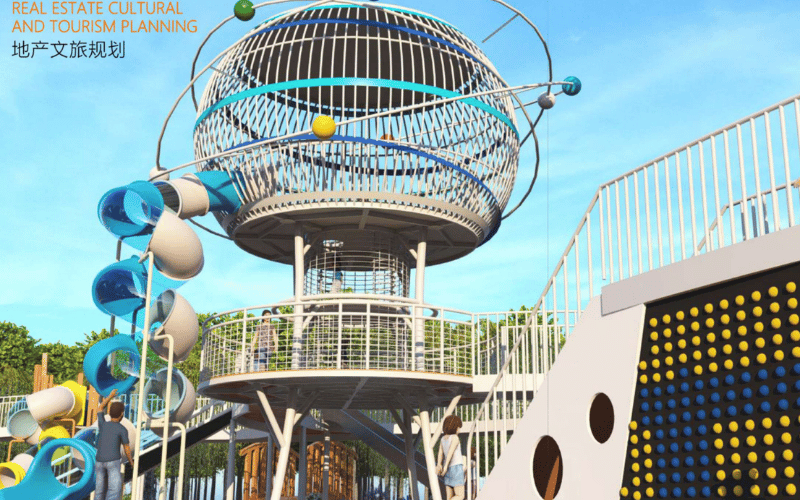Table of Contents
Toggle1. Introduction: Setting the Stage
Playgrounds play a vital role in fostering child development and strengthening community connections. They provide children with opportunities to build physical strength, develop social skills, and spark their imaginations, all while creating a shared space where families and neighbors can come together. However, selecting the right commercial playground equipment can feel overwhelming, especially when safety, inclusivity, and budget all demand equal attention.
Choosing equipment isn’t just about picking colorful slides or swings. It’s about creating a space that maximizes play value while ensuring every child, regardless of ability, feels welcome and safe. Organizations must also consider durability, compliance with safety standards, and long-term maintenance needs to make the most of their investment.
This guide breaks down the process into ten essential tips, offering practical advice to help you navigate the complexities of playground planning. Whether you’re designing a small community park or a large school playground, these insights will empower you to make informed decisions that benefit children and the community for years to come.
2. Safety and Compliance: The Foundation
Safety and compliance form the backbone of any successful playground project. Without these elements, even the most innovative designs can pose risks to children and liability concerns for organizations. Let’s explore how to ensure your playground meets the highest safety standards while providing a secure environment for play.
Understanding Safety Standards
Adhering to safety standards is non-negotiable when selecting commercial playground equipment. These standards ensure that every piece of equipment is designed, manufactured, and installed to minimize risks.
- Key Certifications: Look for equipment certified by organizations like ASTM (American Society for Testing and Materials) and CPSC (Consumer Product Safety Commission). ASTM standards, such as ASTM F1487, outline specific requirements for playground equipment, including structural integrity, spacing, and entrapment prevention. CPSC guidelines provide additional recommendations for safe playground design and maintenance.
- Ensuring Compliance: Always verify that the equipment supplier provides documentation proving compliance with these standards. During installation, work with certified professionals who understand these regulations to ensure proper assembly and placement. Regular inspections should also follow these guidelines to maintain safety over time.
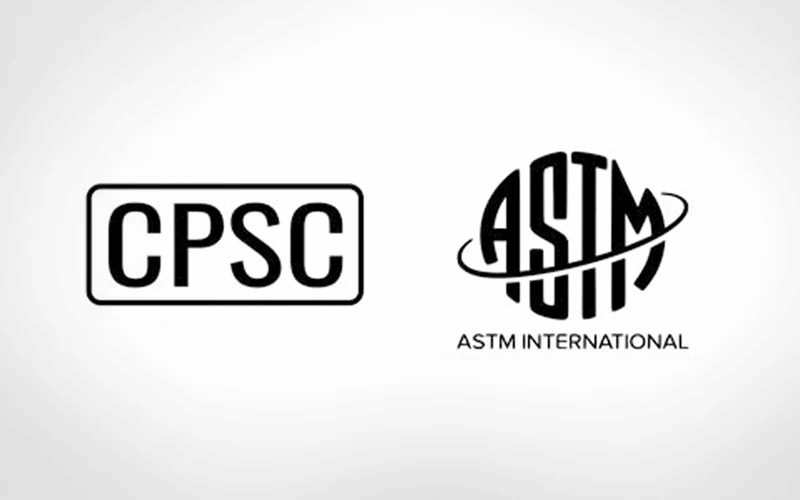
Choosing Safe Surfacing Materials
The surface beneath your playground equipment is just as important as the equipment itself. Proper surfacing reduces the risk of injuries from falls, which are the leading cause of playground-related accidents.
- Types of Surfacing:
- Rubber Tiles: These provide excellent shock absorption and are easy to maintain. They come in various colors and patterns, allowing for creative designs.
- Engineered Wood Fiber (EWF): A cost-effective option that offers good cushioning. EWF compacts over time, so regular raking and topping up are necessary to maintain its effectiveness.
- Poured-in-Place Rubber: This seamless option offers superior durability and accessibility for children with mobility aids, though it comes with a higher upfront cost.
- Determining Fall Height Protection: Match the surfacing material to the fall height of your equipment. For example, if your playground includes a 6-foot climbing structure, ensure the surfacing can absorb the impact of a fall from that height. Manufacturers typically provide fall height ratings for their materials, so use this information to guide your selection.
By prioritizing safety standards and choosing the right surfacing materials, you lay a solid foundation for a playground that not only meets compliance requirements but also provides a secure and enjoyable space for children. These steps ensure peace of mind for both the organization and the families who use the playground.
3. Designing for Inclusivity and Accessibility
An inclusive playground ensures that every child, regardless of ability, can participate in play. Thoughtful design and adherence to accessibility standards create a space where children of all abilities feel welcome and engaged. Let’s explore how to design a playground that fosters inclusivity while meeting legal requirements.
Creating an Inclusive Playground
Inclusion starts with features that accommodate a wide range of physical, sensory, and cognitive abilities.
- Wheelchair Ramps: Incorporate ramps with gentle slopes to provide access to elevated play structures. Ensure the ramps are wide enough to accommodate mobility devices and include handrails for added support.
- Sensory Panels: Add interactive panels with textures, sounds, and visual elements to engage children with sensory processing needs. Panels with spinning gears, musical elements, or tactile surfaces can provide stimulation and encourage exploration.
- Ground-Level Activities: Include play elements like swings with harnesses, accessible merry-go-rounds, or ground-level playhouses. These features allow children with limited mobility to participate fully without needing to climb or navigate stairs.
Why It Matters: Designing for inclusivity not only benefits children with disabilities but also fosters empathy and social interaction among all children. It creates a space where everyone can play together, breaking down barriers and building connections.
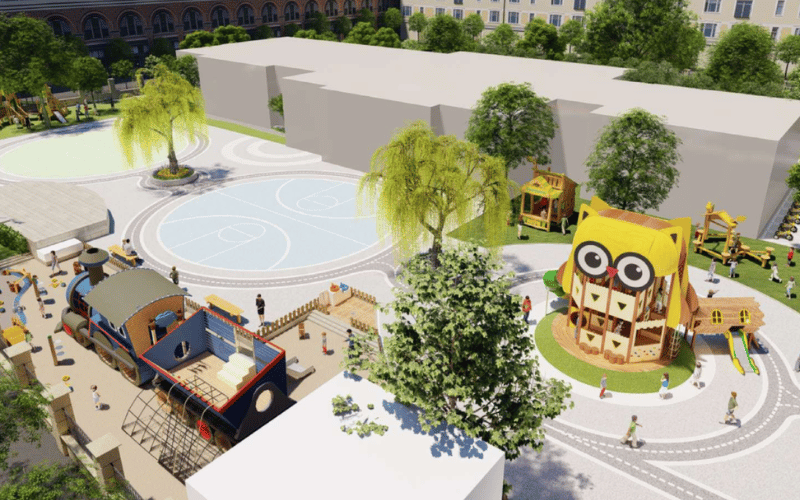
Compliance with Accessibility Laws
Meeting accessibility requirements isn’t just a best practice—it’s a legal obligation.
- Overview of ADA Requirements: The Americans with Disabilities Act (ADA) outlines specific guidelines for playground accessibility. For example:
- Playgrounds must include a mix of ground-level and elevated play components that are accessible to children with disabilities.
- Surfacing must be firm, stable, and slip-resistant to accommodate wheelchairs and mobility aids. Engineered wood fiber, rubber tiles, and poured-in-place rubber are common compliant options.
- Routes to and within the playground must be accessible, with clear pathways and appropriate widths for mobility devices.
- Documentation and Verification: Work with manufacturers and installers who understand ADA requirements and can provide documentation to confirm compliance. Conduct a final inspection to ensure all elements meet the necessary standards.
By designing for inclusivity and adhering to accessibility laws, you create a playground that welcomes every child and family. These thoughtful choices not only enhance the play experience but also demonstrate a commitment to equity and community building.
4. Maximizing Play Value
A well-designed playground does more than entertain—it challenges, inspires, and fosters growth across multiple dimensions of play. By incorporating diverse play elements and designing for multi-age engagement, you can create a space that keeps children coming back for more.
Incorporating Diverse Play Elements
Diversity in play equipment ensures that children can engage in physical, social, and imaginative activities, all within the same space.
- Climbing Structures: Include options like rock walls, rope climbers, or monkey bars to build strength, coordination, and confidence. Vary the difficulty levels to cater to different age groups and abilities.
- Swings: Offer a mix of traditional belt swings, bucket swings for toddlers, and inclusive swings with harnesses. Swings provide not only physical activity but also a calming sensory experience for many children.
- Slides: Add slides of varying heights and designs, such as straight, spiral, or double-wide slides for group play. Ensure proper surfacing at the base to cushion landings.
- Interactive Panels: Install panels with features like mazes, musical instruments, or storytelling prompts. These elements encourage imaginative play and social interaction, especially for children who may not gravitate toward physical activities.
Benefits: Combining these elements creates a playground that supports physical development, fosters social connections, and sparks creativity. Children can move seamlessly between activities, keeping their play experience dynamic and engaging.
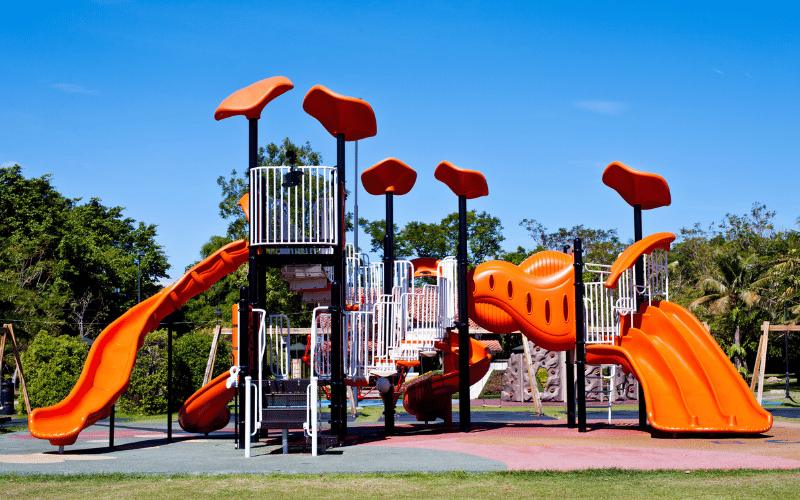
Encouraging Multi-Age Engagement
Designing for multiple age groups ensures that the playground serves the entire community, from toddlers to older children.
- Separate Zones: Create distinct areas tailored to different age groups:
- Toddlers: Focus on low-to-the-ground equipment like small slides, crawl tunnels, and sensory panels. Use soft surfacing and rounded edges to prioritize safety.
- Preschoolers: Include mid-sized climbing structures, balance beams, and interactive playhouses. These elements challenge their growing motor skills while encouraging imaginative play.
- Older Children: Add taller climbing towers, zip lines, and more complex obstacle courses to keep them engaged and active.
- Shared Spaces: Incorporate features like group swings, large sandboxes, or open play areas where children of all ages can interact and play together.
Why It Works: By designing for multi-age engagement, you create a playground that grows with children and accommodates families with kids of different ages. This approach maximizes the playground’s value and ensures it remains a vibrant community hub.
By blending diverse play elements with thoughtful zoning for different age groups, you can design a playground that offers endless opportunities for exploration, connection, and growth. Every piece of equipment and every layout choice contributes to a space where children can thrive.
5. Planning for Durability and Maintenance
A playground is an investment meant to last for years, enduring both enthusiastic play and the elements. To ensure its longevity, you need to focus on selecting durable materials and establishing a proactive maintenance plan. Let’s explore how to build a playground that stands the test of time.
Choosing Long-Lasting Materials
The materials you choose will determine how well your playground weathers the elements and heavy use.
- Weather-Resistant Options: Opt for materials specifically designed for outdoor use. For metal components, choose powder-coated steel or aluminum to resist rust and corrosion. For wooden elements, use pressure-treated wood or naturally durable species like cedar or redwood, and seal them with a non-toxic weatherproof coating. Plastic components should be UV-stabilized to prevent fading and cracking under the sun.
- Importance of Warranties and Maintenance Services: Always work with manufacturers who offer comprehensive warranties on their equipment. A good warranty not only protects your investment but also reflects the manufacturer’s confidence in their product. Additionally, inquire about maintenance services or replacement part availability to ensure you can address wear and tear promptly.
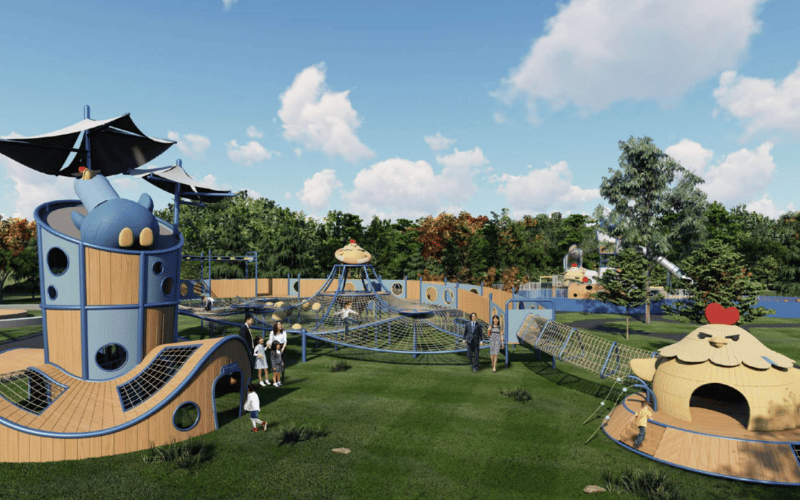
Maintenance Tips
Even the most durable playground requires regular care to keep it safe and functional.
- Regular Inspections and Cleaning Schedules: Create a routine inspection plan to check for loose bolts, worn-out surfacing, or damaged components. For example, inspect high-use areas like swings and slides weekly, while conducting a full equipment check monthly. Clean surfaces regularly to remove dirt, debris, and mold, especially after heavy rains or seasonal changes.
- Partnering with Suppliers for Repair Services: Establish a relationship with your equipment supplier or a certified maintenance provider. They can assist with repairs, provide replacement parts, and ensure that any fixes meet safety standards. For instance, if a swing chain shows signs of wear, replacing it promptly with a manufacturer-approved part prevents potential accidents.
By choosing durable materials and committing to a consistent maintenance routine, you can extend the life of your playground and keep it safe for years to come. Every inspection, repair, and cleaning session contributes to a space that remains inviting and secure for children and families.
6. Conducting a Site Assessment
A thorough site assessment lays the groundwork for a successful playground project. By evaluating the space and terrain and optimizing the layout, you can ensure the playground fits seamlessly into its environment while maximizing safety and usability.
Evaluating Space and Terrain
Understanding the physical characteristics of your site is the first step in creating a functional and safe playground.
- Measuring Dimensions and Identifying Potential Obstacles: Start by measuring the total area available for the playground. Use these measurements to determine the size and type of equipment that will fit comfortably. Walk the site to identify obstacles such as tree roots, uneven ground, or utility lines. For example, if you notice a sloped area, consider whether it can be leveled or used creatively for features like slides or climbing walls.
- Considering Safety Surfacing Options: Assess the terrain to determine the best safety surfacing for the site. For flat areas, rubber tiles or poured-in-place rubber provide excellent shock absorption and accessibility. For larger or uneven spaces, engineered wood fiber or artificial turf may be more practical. Ensure the surfacing material meets fall height requirements for the equipment you plan to install.
Optimizing Layout
A well-planned layout ensures that the playground is not only functional but also enjoyable and easy to navigate.
- Tips for Efficient Space Utilization and Flow:
- Zoning: Divide the playground into zones based on activity type and age group. For instance, place toddler equipment in a quieter corner, while reserving central areas for high-energy activities like climbing or swinging.
- Clear Pathways: Design pathways that connect different zones without cutting through play areas. This prevents congestion and reduces the risk of accidents.
- Use Vertical Space: If your site has limited square footage, incorporate vertical elements like climbing towers or multi-level play structures to maximize play opportunities without overcrowding the ground.
- Shade and Seating: Position benches and shaded areas near high-activity zones so caregivers can supervise comfortably. Use natural shade from trees or install shade sails to protect children from the sun.
By carefully evaluating the site and planning the layout, you can create a playground that feels intentional and inviting. Every measurement, material choice, and design decision contributes to a space that balances safety, functionality, and fun.
7. Budgeting and Financing
Creating a playground that meets your vision while staying within budget requires careful planning and strategic decision-making. By balancing quality and cost and considering long-term expenses, you can make the most of your investment without compromising on safety or play value.
Balancing Quality and Cost
Prioritizing features within your budget ensures you allocate resources effectively while still delivering a high-quality play experience.
- How to Prioritize Features: Start by identifying the must-have elements for your playground. For example, if your community values inclusivity, prioritize accessible features like wheelchair ramps or inclusive swings. If space is limited, focus on multi-functional equipment, such as combination play structures that include slides, climbers, and interactive panels in one unit. Avoid cutting corners on safety or durability—invest in high-quality materials for high-use areas like swings and climbing structures.
- Exploring Financing Options and Fundraising Ideas: Look into grants or funding programs specifically for community or school playgrounds. Many organizations, such as KaBOOM! or local government initiatives, offer financial support for play spaces. For fundraising, engage the community with events like bake sales, sponsorship opportunities, or crowdfunding campaigns. Highlight the benefits of the playground to rally support and build excitement.
Long-Term Cost Considerations
A playground’s initial cost is only part of the equation. Factoring in long-term expenses ensures your investment remains sustainable.
- Factoring in Maintenance Costs: Plan for regular maintenance, such as replacing worn-out surfacing, tightening bolts, or resealing wooden elements. For example, rubber tiles may have a higher upfront cost but require less frequent replacement compared to wood chips, making them more cost-effective over time.
- Replacement Costs: Consider the lifespan of each component when budgeting. Swings and slides, for instance, may need replacement every 5-10 years, depending on usage and material quality. Choose equipment from manufacturers who offer replacement parts to avoid the expense of replacing entire structures.
By balancing quality with cost and planning for long-term expenses, you can create a playground that delivers value for years to come. Every dollar spent thoughtfully contributes to a space that serves the community while staying financially sustainable.

8. Environmental Responsibility
Designing a playground with environmental responsibility in mind not only benefits the planet but also creates a space that teaches children the value of sustainability. By choosing eco-friendly options and promoting green spaces, you can build a playground that harmonizes with nature while reducing its ecological footprint.
Choosing Eco-Friendly Options
Sustainability starts with the materials and processes used to create and maintain your playground.
- Sustainable Materials and Manufacturing Processes: Look for equipment made from recycled or renewable materials. For example, many manufacturers now offer play structures made from recycled plastic lumber, which mimics the look of wood but resists weathering and requires less maintenance. Metal components should be made from recycled steel or aluminum, and coatings should be non-toxic and free of harmful chemicals. Ask suppliers about their manufacturing processes—prioritize companies that minimize waste and use energy-efficient production methods.
- Recycling or Repurposing Old Equipment: If you’re replacing an existing playground, consider recycling or repurposing the old equipment. Metal components can often be recycled, while wooden elements can be repurposed into benches, planters, or other community features. Partner with local recycling programs or organizations that refurbish playground equipment for donation to underserved areas.
Promoting Green Spaces
Incorporating natural elements into your playground design not only enhances its aesthetic appeal but also provides environmental and educational benefits.
- Incorporating Natural Elements: Add trees, shrubs, or gardens around the playground to create shade, improve air quality, and support local wildlife. For example, planting native species can attract pollinators like bees and butterflies, turning the playground into a mini-ecosystem. Use natural materials like boulders, logs, or sand to create play features that blend seamlessly with the environment.
- Educational Opportunities: Include signage or interactive panels that teach children about sustainability, local flora and fauna, or the importance of recycling. For instance, a garden area could feature signs explaining how plants grow or how composting works, turning playtime into a learning experience.
By choosing sustainable materials, recycling old equipment, and incorporating green spaces, you can create a playground that reflects a commitment to environmental stewardship. Every design choice becomes an opportunity to inspire children and the community to care for the world around them.
9. Partnering with the Right Supplier
Choosing the right supplier is one of the most critical steps in creating a successful playground. A reliable partner not only provides high-quality equipment but also supports you throughout the process, from design to installation and beyond. Let’s break down what to look for and the key questions to ask when evaluating suppliers.
What to Look for in a Supplier
A great supplier brings more than just products to the table—they offer expertise, reliability, and a commitment to your project’s success.
- Reputation, Certifications, and Customer Reviews: Start by researching the supplier’s track record. Look for certifications like ASTM compliance or ISO standards, which indicate adherence to safety and quality benchmarks. Read customer reviews and testimonials to gauge their reliability and responsiveness. A supplier with a strong reputation will often have a portfolio of completed projects you can review or even visit.
- Availability of Customization Options and Support Services: Not all playgrounds are one-size-fits-all. Choose a supplier that offers customization options to tailor equipment to your site, community needs, or branding. For example, they should be able to adjust colors, add logos, or design unique play structures. Additionally, prioritize suppliers who provide comprehensive support services, such as design consultations, installation assistance, and maintenance packages.
Questions to Ask
Asking the right questions ensures you understand what the supplier offers and how they’ll support your project.
- Installation Timelines: Ask about the expected timeline for delivery and installation. For instance, if you’re planning a school playground, ensure the supplier can complete the project before the school year begins. Clarify whether they handle installation in-house or work with certified contractors.
- Warranties: Inquire about the warranty coverage for both equipment and surfacing. A good supplier will offer warranties that cover structural components for at least 10-15 years and surfacing for 5-10 years. Confirm what the warranty includes—does it cover wear and tear, or only manufacturing defects?
- Post-Purchase Support: Understand what happens after the playground is installed. Does the supplier offer regular maintenance services or provide training for your staff to conduct inspections? Do they stock replacement parts for quick repairs? A supplier committed to long-term support will make it easier to keep your playground safe and functional.
By partnering with a supplier who meets these criteria and answers your questions with transparency, you set the stage for a smooth and successful playground project. Every interaction with the supplier should reinforce their role as a trusted ally in bringing your vision to life.

10. Conclusion: Investing in Play
Creating a playground is more than just installing equipment—it’s about building a space where children can grow, communities can connect, and memories can be made. By carefully considering key factors like safety, inclusivity, durability, and environmental responsibility, you can design a playground that serves as a cornerstone for your community.
From selecting materials that withstand the elements to incorporating features that welcome children of all abilities, every decision you make shapes the play experience. Thoughtful planning ensures that your playground is not only fun but also safe, accessible, and sustainable for years to come.
Now is the time to take the first step. Whether you’re revitalizing an existing space or starting from scratch, your efforts will create a lasting impact. Start planning your playground project today and transform your vision into a vibrant, engaging play space that brings joy to children and families alike.
FAQs:
Q: What are the differences between residential and commercial playground equipment standards?
A: Residential and commercial playground equipment differ significantly in terms of safety standards, durability, and intended use. Commercial playgrounds must adhere to stricter safety guidelines, such as ASTM F1487, which covers public-use equipment, while residential equipment follows ASTM F1148. Commercial equipment is designed to withstand higher traffic and heavier use, often using more durable materials like powder-coated steel or UV-stabilized plastics. Additionally, commercial playgrounds require compliance with accessibility laws, such as the ADA, which is not mandatory for residential setups.
Q: How often should commercial playground equipment be inspected?
A: Conduct inspections regularly to ensure safety and functionality. Perform a quick visual check weekly to identify obvious issues like loose bolts, damaged surfacing, or worn-out components. Schedule a more thorough inspection monthly, focusing on structural integrity, moving parts, and surfacing conditions. For high-traffic playgrounds, consider professional inspections annually to catch less visible issues and ensure compliance with safety standards.
Q: What documents must a manufacturer provide to prove ASTM compliance?
A: Manufacturers should provide a certificate of compliance that explicitly states adherence to ASTM standards, such as ASTM F1487 for commercial playground equipment. Additionally, request detailed test reports from third-party labs that verify the equipment meets safety and performance criteria. Installation instructions and maintenance guidelines should also reference compliance with ASTM standards to ensure proper setup and upkeep.
Q: Can recycled materials be used for commercial playground surfacing?
A: Yes, recycled materials are a popular choice for commercial playground surfacing. Options like rubber tiles, poured-in-place rubber, and mulch made from recycled tires are durable, eco-friendly, and compliant with safety standards. Ensure the material meets fall height requirements and is free of harmful chemicals. Recycled surfacing not only reduces environmental impact but also provides excellent shock absorption and long-term performance.
Q: What is the typical lifespan of heavy-duty metal playground equipment?
A: Heavy-duty metal playground equipment typically lasts 15-20 years or more with proper maintenance. Powder-coated steel and aluminum resist rust and corrosion, extending their lifespan even in harsh weather conditions. Regular inspections, cleaning, and touch-up painting can prevent wear and tear, ensuring the equipment remains safe and visually appealing for decades.




